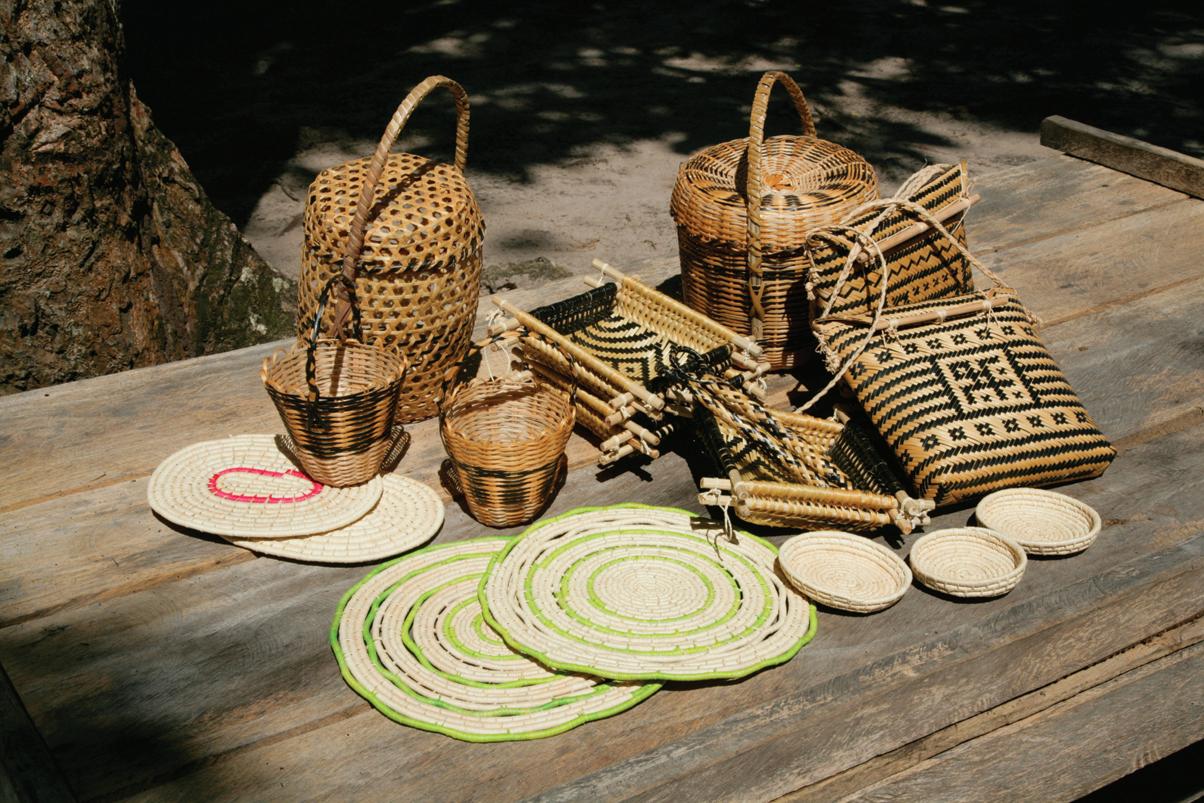Primary Social Studies for Antigua and Barbuda

STUDENT’S BOOK
GRADE 3
Historical sites in Antigua and Barbuda
Historical sites are places of interest that attract tourists. They are very important as they help to build tourism, which is the main industry of Antigua. Historical sites make tourists want to come and visit our country. Here are some of the historical sites.

Shirley Heights
Shirley Heights is in the very south of Antigua. It was a fort built by the British to defend Antigua. Some parts of the old fort are still there.
Shirley Heights
Today, Shirley Heights is very popular with tourists because it has wonderful views over English Harbour and Falmouth Harbour. There is a restaurant and bar – and a party every Sunday which both locals and tourists enjoy.
Nelson’s Dockyard
Nelson’s Dockyard is part of Antigua’s largest National Park. It is in the area known as English Harbour. The British Navy used the Harbour to protect their ships and started to build the Dockyard in the 1740s, using slaves from the sugar plantations.
Nelson’s Dockyard is named after Admiral Lord Nelson. It was closed in 1889 when the British Navy left and it fell into decay. It was later restored and in 2016 was declared a World Heritage Site by UNESCO.

Devil’s Bridge
Devil’s Bridge
Devil’s Bridge is in the northeast of Antigua and is a natural rock arch. The sea is often very rough there and it has gradually worn away the rocks to form the arch.
Devil’s Bridge got its name because slaves from the sugar plantations would throw themselves into the sea to escape from their slave masters.

2 Our cultural heritage
We are learning to:

• define the terms: ‘ancestors’, ‘traditions’, ‘customs’, ‘culture’, ‘family’, ‘ethnic’
• name the earliest inhabitants of Antigua: the Arawaks, the Caribs


• name later settlers who came to Antigua: Europeans, Africans, Indians, Chinese
• know about some different groups and nationalities who settled in Antigua
• describe some local traditions, customs and festivals
• know about the local dialect
• know why it is important to preserve our culture.
What is culture?
When we talk about culture, we are talking about the way we live. Culture is the way of life of a group of people. Our culture includes the way we speak, dance, dress and cook our food, the music we play, the stories we tell and our religion.
The culture we have today was learned from our ancestors who came to live on our island before us. Different groups of people came to settle in Antigua at different times. Each group brought with them their own cultural traditions, which they continued in their new life. For example, our national dish, fungee and pepperpot, was brought to Antigua by the Amerindians. The dialect we speak and our dance came from the Africans, while the language we speak, as well as our major religions, came from the Europeans.
Earliest inhabitants of Antigua
The earliest known people to come and live in Antigua were the Amerindians. They came by canoe from South America looking for food. Areas of Antigua and Barbuda where they settled include:
• Twenty Hill in Parham
• Jolly Beach
• Indian Creek
• Mill Reef
• Mamora Bay
• Green Castle Hill
There were two main groups of Amerindians, the Arawaks and the Caribs.
The Arawaks
The Arawaks, also called Tainos, were gentle and peaceful people who lived in groups of families. They shared their belongings and food with each other.

They built houses made of mud, sticks and grass. The houses were round with thatched roofs.
Here, you can see an Arawak family today, and what typical houses would have looked like

The Arawaks were very clever at making things so that their life was easier. They used the natural resources around them. They made pottery from clay, hammocks from cotton, baskets from grass and beautifully carved trays from wood.

From stones and shells they made axes and jewelry, from tree trunks they made canoes and wooden spears. They made woven fish traps and shellfish tools to hunt animals and catch fish.

While the men went fishing and hunting, the women grew crops, such as cassava and sweet potatoes. They made cassareep from cassava juice and used it, with peppers and meat or fish, to make pepperpot. The Arawaks worshipped the spirits of nature and of their ancestors.
The Caribs
Gradually, Antigua was taken over by the Caribs, who also came from South America. They were a fierce and warlike people and the Arawaks were no match for them. Like the Arawaks, they lived in groups of families, but the men and older boys lived in one house, while the women, girls and younger boys lived separately. They used natural resources to make useful things like hammocks, clay pots and wooden stools. They were also good at making weapons, because they loved to fight.
A Carib stone axe and pottery

Like the Arawaks, the Carib women grew crops like cassava, yams, sweet potatoes and peppers, while the men hunted and fished.

